How AI Is Transforming Energy Transmission & Distribution
Understanding the potential of AI for the power and energy community is just one of the essential conversations in store for IEEE PES T&D 2024 in Anaheim. Stay tuned for the complete technical program this winter and more details on how IEEE PES T&D is accelerating the future grid.
Few emerging technologies have generated as much buzz as artificial intelligence (AI) and machine learning (ML). These tools are creating new capabilities across industries — and in the energy transmission and distribution sector, they’re unlocking new ways to improve efficiency, reliability, and sustainability, while furthering progress toward the smart grid and a clean energy future. But before AI and ML’s unparalleled (and seemingly limitless) potential can be fully realized, it’s important to understand how they’re being applied today and what implementation challenges the power industry is currently facing.
Coming to Terms: What are AI and Machine Learning?
The terms “artificial intelligence” and “machine learning” are often conflated, and it’s easy to see why. In general, “AI” refers to machines’ ability to perform tasks that require problem-solving, discernment, and other functions typically requiring human intelligence. In the T&D world, this can include tasks like root cause analysis, helping engineers identify the source of a problem. Machine learning is a branch of AI that involves teaching computers how to perform tasks and make predictions based on data, without needing to be explicitly programmed. One example already in practice is using ML for distribution pole and URD cable replacement prioritization.

Given the complexity of the multifaceted energy industry and the niche knowledge necessary for certain tasks, leveraging AI and ML isn’t as straightforward as it is in several other fields. “From the T&D perspective, AI is much, much more complicated. It’s not as simple as ‘build and train an algorithm, get a result, make a decision.’ You have to combine subject matter expertise with data science. It’s an art,” said Abder Elandaloussi, T&D innovation manager at Southern California Edison (SCE). While each utility and organization might be using these tools differently, Elandaloussi notes that many “lower risk, higher reward” opportunities can be thought of in three broad areas:
Business Processes
While the T&D industry isn’t necessarily like any other, some proven applications of AI and ML already in use in other industries can be applied at T&D organizations. These include tasks that analyze customer behavior and patterns to provide the best service possible, as well as the automation of traditionally time-consuming tasks. From creating materials and collateral (like RFIs and RFPs for vendors, etc.) to streamlining customer communications to extracting information from voice recordings, AI and ML can enhance efficiency — which translates to minimizing costs and more affordable electricity for customers.
Asset Management
Knowing where assets are and predicting their health and longevity are essential for ensuring the safety, reliability, and resiliency of an energy system — but accomplishing these objectives via manual processes is often time-consuming and expensive. Already, utilities are leveraging AI and ML’s ability to provide a clearer picture of existing grid infrastructure. One example is SCE’s data remediation tool, which is expected to save the company $8 million and 170,000 worker hours by analyzing utility photo data, allowing it to accurately predict equipment locations within 30 feet. Because of AI’s ability to analyze large data sets and patterns, it also shows a lot of promise in anticipating when assets may need serviced or replaced, allowing for better planning and budgeting.

Situational Awareness
Emerging technologies are helping organizations get a better view of the assets that make up their grid — and also, what is (and could) happen in that grid. One prime example is how the SCE fire science program leverages ML technology to improve the accuracy of wind-speed forecasts — and by association, the threat of wildfires in high-risk areas, a practice that began in 2021 and has since grown from 61 SCE weather station locations to over 1,600 today. Research has shown that the technology can also be used to measure moisture levels in remote vegetative areas, further amplifying wildfire threat detection capabilities.
In addition to weather events, improved predictive analytics can also help utilities detect anomalies like cybersecurity issues, as well as demand patterns. By assessing and analyzing various datasets (operational, societal, non-operational, etc.), utilities have the opportunity to innovate with ML to enhance activities related to operations, engineering, design, planning, and maintenance of the grid.
Preparing for the Future
AI and ML are already being applied across the T&D industry in a variety of exciting ways. But as use cases continue to grow, specific challenges and questions are beginning to surface, including:

The knowledge gap. The need for expertise in both AI and energy systems is relatively new, causing demand for specialized skill sets that, essentially, require the combination of power system engineers and data scientists. Adding data scientists to existing engineering teams is one approach to solving the knowledge gap issue — however, it takes time for professionals from different backgrounds to create the shared understanding necessary to achieve optimal results. Another approach is for engineers already working at utilities to learn data science, creating “data science engineers.” This allows engineers with an understanding of existing pain points to identify ways to address them with AI and ML.
Regardless of the approach, rolling it out across the organization (vs. with only one team) is essential for success. “To build an effective AI model, you need to fully understand what you’re trying to improve,” said Elandaloussi. “People focused on asset management may not know the intricacies of situational awareness, for example. That’s why it’s a good idea to bring in a subject matter expert who has done tasks like data collection, clean up, and analysis manually before.” Elandaloussi also highlighted the importance of selecting individuals willing to “think outside the box when coming up with algorithms.” Bringing in fresh sets of eyes, brainstorming, asking questions, and challenging each other can help teams — and ultimately, entire organizations — best utilize existing skill sets in order to achieve the artistry necessary for applying AI and ML in beneficial ways.
Data quality. Incomplete, inconsistent, outdated, or otherwise inaccurate data can be the downfall of a promising AI tool. On top of ensuring the quality of the initially provided data, there’s a need to ensure that algorithms are constantly maintained and evolving. “That’s where you need a lot of structure,” said Elandaloussi. “You need to know what data you’re going to bring in, how you’re going to make sure the data is always up to speed — it takes time to build a scalable, repeatable process that can achieve that objective.” Elandaloussi noted that it’s essential to have good data engineers and a solid architecture for how the data is going to be used before beginning to build models. All of that goes into making sure data is clean and accessible, and that algorithms are useful for a specific organization.
As expertise expands and technology continues to evolve, today’s challenges will likely subside and new capabilities will be revealed. That means this is the time to shape guidelines and have the discussions that will guide future applications. “The question now is, how do you develop a long-term approach to using AI and machine learning for all T&D-related use cases?” said Elandaloussi. “We need to start today on establishing the framework, processes, people, and infrastructure needed to unlock the possibilities of AI and ML.”
SCE is the 2024 host utility of the IEEE PES T&D Conference & Exposition, which will take 6-9 May at the Anaheim Convention Center. Registration opens 7 November.







